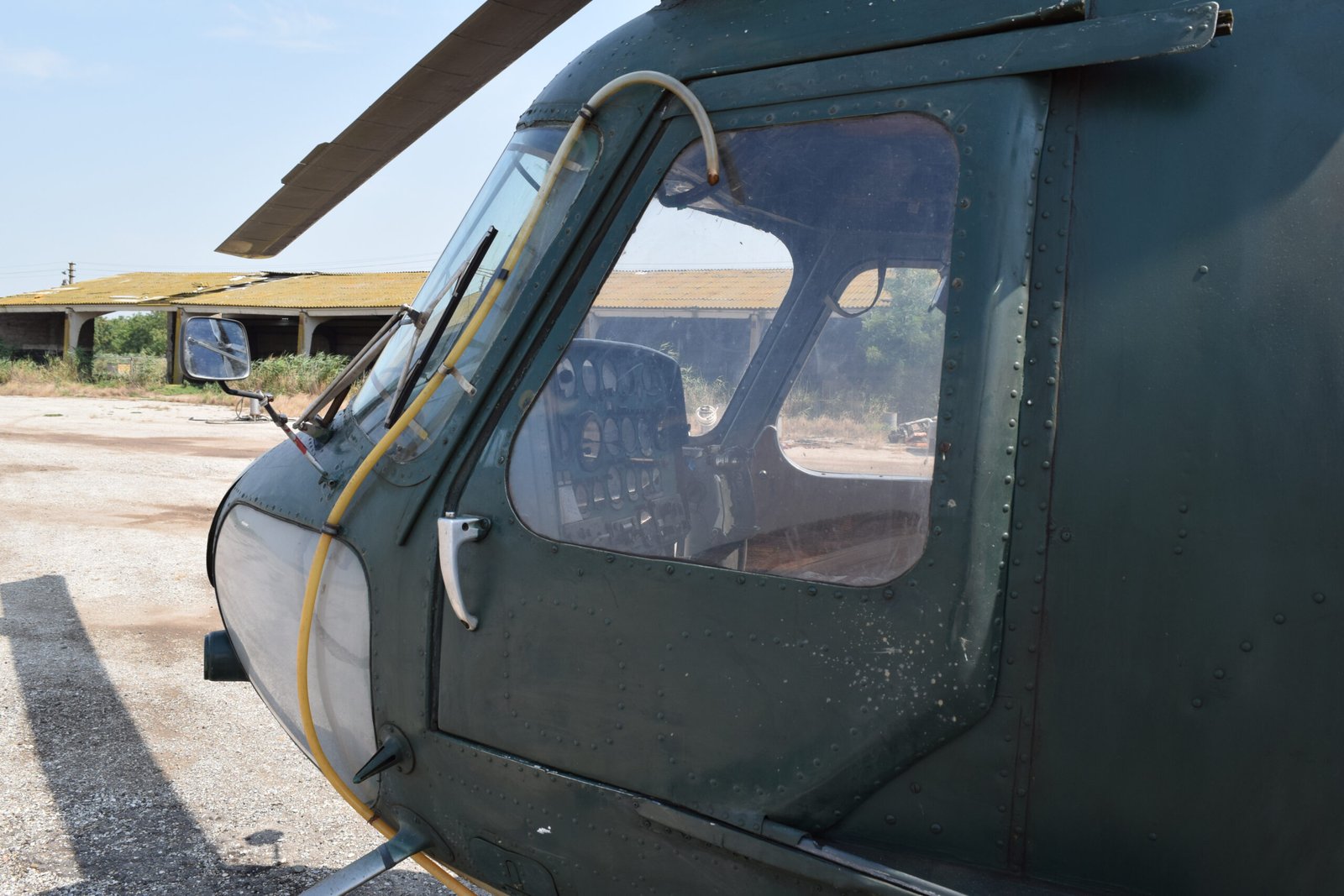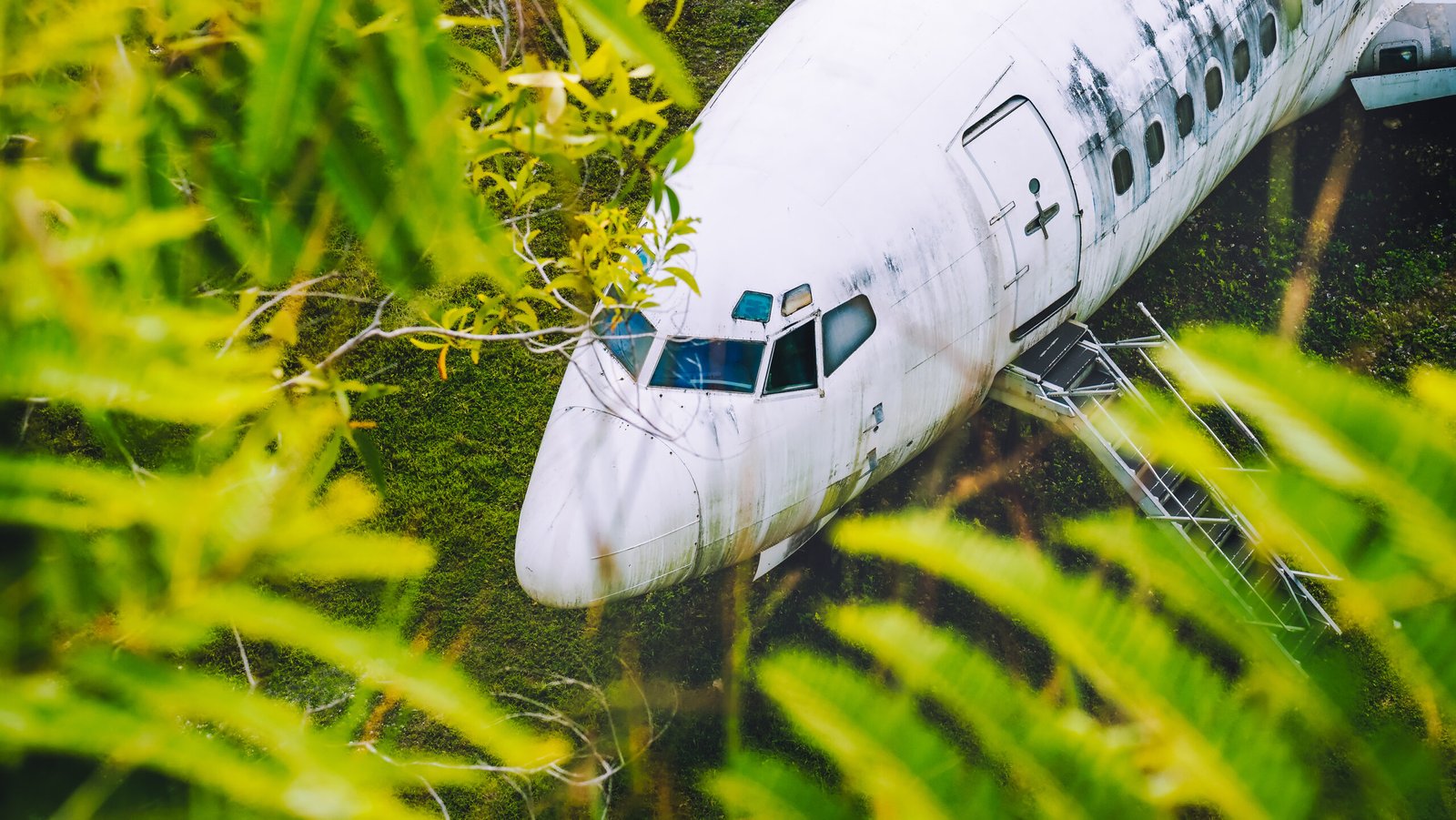Online Aviation Courses
The History of Aviation: Milestones That Changed the Skies
Aviation is a tale spun from dreams, engineering marvels, and relentless human curiosity. From the first attempts at flight to the modern-day technological advancements that define aviation, each milestone has significantly altered how we traverse our skies. As we delve into this captivating history, it’s essential to consider how technology and training have evolved alongside these breakthroughs.
The journey began in 1903 when the Wright brothers achieved powered flight with their iconic Flyer. This moment opened a gateway to innovation that would only accelerate over the decades. With advancements in materials and aerodynamics came more sophisticated aircraft designs, leading us to the golden age of aviation in the 1920s and 1930s. Fast forward to today, where technology reigns supreme—aircraft are now equipped with state-of-the-art avionics that enhance safety and efficiency.
Training has also transformed dramatically since those early days. Gone are the simplistic methods of yesteryear; contemporary pilot training heavily relies on simulators that replicate real-world flying conditions. These sophisticated systems allow aspiring pilots to hone their skills without leaving solid ground. Simulators provide an immersive experience, enabling trainees to navigate through various scenarios—from routine takeoffs to unforeseen emergencies—without risking lives or aircraft.

In addition to practical training tools like simulators, numerous resources exist online for avian enthusiasts and professionals alike. A myriad of blogs and websites cater specifically to aviation aficionados:
1. **Airliners.net** – A community-driven site filled with photographs and discussions about commercial aviation.
2. **FlightGlobal** – Offers industry news, insights on trends, and reports on aircraft developments.
3. **Pprune.org (Professional Pilots Rumour Network)** – An engaging forum where aviators share experiences and advice.
4. **AOPA (Aircraft Owners and Pilots Association)** – A vital resource for pilots seeking information about regulations, advocacy, and education.
Social media platforms have also become a treasure trove for those passionate about flying. Twitter accounts like @TheFlyingEngineer provide fascinating insights into technical aspects of aviation while Instagram showcases stunning aerial photography through hashtags like #aviationlovers or #pilotlife.
Furthermore, online courses are revolutionizing pilot education by making it accessible regardless of geographical constraints. Ground schools offer comprehensive programs tailored for both novice aviators eager for their Private Pilot License (PPL) as well as seasoned professionals pursuing advanced ratings or endorsements. Websites such as Sporty’s Pilot Shop deliver interactive courses covering everything from basic aerodynamics to advanced navigation techniques.
In today’s rapidly advancing world, drone technology has emerged as another transformative force in aviation history. Initially used primarily for military purposes, drones have found applications across industries—from agriculture monitoring to search-and-rescue missions—and even recreational use among hobbyists! Understanding drone operation is crucial as regulations evolve; resources like FAA.gov provide valuable guidance on certification requirements for drone pilots.
For those contemplating a career in aviation—a field brimming with opportunities—resources abound! Aspiring pilots can explore job boards like Indeed or Glassdoor specifically geared towards aviation careers while networking through platforms such as LinkedIn opens doors within this competitive industry.

The evolution of aviation continues unabated; each advancement builds upon past achievements while propelling us toward new horizons yet unexplored. From cutting-edge simulators aiding future pilots’ training processes to the ever-expanding realm of drones redefining airspace usage—the milestones that shaped our skies are just beginning! Whether you’re an aspiring aviator or merely captivated by flight itself, embracing these developments ensures you remain grounded in this thrilling journey through time aloft.
From Runways to Skyways: The Impact of Airport Infrastructure on Global Travel
In today’s interconnected world, the aviation industry stands as a vital pillar of global travel. Behind the scenes, robust airport infrastructure plays a crucial role in ensuring that we can traverse continents within hours. But the story does not end with runways and terminals; it extends into technology training, online resources, and even the burgeoning field of drones. Let’s explore how these elements intertwine to shape modern travel.
At the heart of aviation’s evolution lies technology training. Modern pilots undergo rigorous simulations that replicate real-world flying scenarios without ever leaving the ground. Flight simulators are not just toys for aspiring aviators; they’re sophisticated tools that allow trainees to experience a variety of conditions and emergencies in a controlled environment. This level of preparedness is essential when you consider that safety is paramount in air travel.
For those eager to dive deeper into aviation knowledge, numerous blogs and websites serve as treasure troves of information. A few notable mentions include Flying Magazine, AirlineReporter.com, and The Points Guy. Each offers unique insights—from technical analyses of aircraft systems to tips for maximizing frequent flyer miles. Social media platforms also foster vibrant aviation communities where enthusiasts can share their experiences and expertise. Twitter accounts like @AviationWeek or Instagram profiles dedicated to aircraft photography provide daily doses of inspiration for both professionals and hobbyists alike.
If you’re considering embarking on a career in aviation, there’s never been a better time to take advantage of online courses and ground schools tailored specifically for budding pilots. Websites such as Pilot Institute offer comprehensive programs covering everything from private pilot certification to advanced instrument ratings—often at your own pace! These flexible options make it easier than ever to fit education into your busy schedule while pursuing your dream job.
The demand for skilled pilots continues to rise, driven by an uptick in global travel post-pandemic and an increasing number of airlines launching new routes. However, aspiring aviators must also stay abreast of regulatory requirements set forth by authorities like the FAA (Federal Aviation Administration). Their website is an invaluable resource for understanding licensing procedures, safety regulations, and ongoing training mandates.

As we look towards the future, one cannot overlook the growing influence of drones in both commercial applications and recreational hobbies. Drones are revolutionizing logistics—think about how packages zip through the skies instead of being stuck in traffic! This innovative technology has led regulators like the FAA to develop guidelines that ensure safe operation alongside traditional air traffic. For those interested in joining this dynamic sector, various online courses teach drone piloting fundamentals while covering regulatory compliance—a must-have skill set as this field expands rapidly.
With advancements continuing at breakneck speed across all facets of aviation—from new aircraft designs to evolving airport technologies—the industry’s landscape remains exciting and unpredictable. As travelers become more discerning about their experiences, airports will need to adapt accordingly by investing in modern amenities that enhance comfort while optimizing efficiency.
In conclusion, whether you’re soaring above clouds as a pilot or simply enjoying your travels below them, understanding how airport infrastructure impacts global travel enriches our appreciation for this incredible industry. With every takeoff and landing facilitated by cutting-edge technology and well-trained professionals—all made possible through rigorous training programs—we’re witnessing history unfold one flight at a time!
Flight Paths: How Aviation is Shaping Global Connectivity
In an era where the world feels smaller than ever, aviation plays a pivotal role in knitting together distant regions, cultures, and economies. The advancements in technology not only enhance safety and efficiency but also shape the future of global connectivity. As we soar through the skies, let’s explore how aviation technology training, online resources, and emerging trends like drones are revolutionizing this industry.

Aviation technology has come a long way since the days of wooden biplanes. Today’s pilots rely heavily on sophisticated simulators that replicate various flying conditions and scenarios. These state-of-the-art training tools allow aspiring aviators to hone their skills without leaving the ground. Simulators provide a risk-free environment for learning, enabling pilots to navigate thunderstorms or emergency situations while receiving real-time feedback from instructors. This shift towards virtual training is not just cost-effective; it enhances safety by ensuring that pilots are well-prepared before they take to the skies.
For those looking to delve deeper into aviation beyond traditional flight schools, a plethora of online courses and ground schools are available at your fingertips. Platforms such as Coursera and Udemy offer specialized courses covering everything from aerodynamics to air traffic control principles. The flexibility of these programs allows individuals to learn at their own pace while balancing other commitments—perfect for those aspiring to become certified pilots or aviation professionals.
In addition to formal education, staying informed about industry trends is crucial for anyone passionate about aviation. A wealth of blogs and websites can serve as invaluable resources for insights into current events, technological advancements, and career advice within the field. Some notable mentions include:
1. **AirlineGeeks.com** – Provides up-to-date news on airlines around the globe.
2. **ThePointsGuy.com** – Focuses on travel tips and maximizing loyalty points.
3. **FlyingMagazine.com** – Offers expert reviews on aircraft along with pilot stories.
4. **PPRune.org** – A popular forum among pilots where they share experiences and advice.
5. **AviationWeek.com** – Delivers in-depth analysis of aerospace developments.
Social media platforms also play a significant role in connecting aviation enthusiasts worldwide. Twitter accounts like @AeroNewsNet keep followers updated on breaking news, while Instagram profiles such as @PilotLife showcase stunning aerial photography alongside glimpses into a pilot’s daily life.

As we explore further into modern aviation landscapes, drones are proving transformative—opening new avenues for connectivity and commerce while raising questions about regulations and airspace management. Drones have found applications beyond mere recreational use; industries such as delivery services, agriculture, surveillance, and even emergency response have started integrating unmanned aerial vehicles (UAVs) into their operations.
For those intrigued by this burgeoning sector or considering a career in piloting drones commercially, it’s essential to understand FAA regulations governing drone usage. The Federal Aviation Administration provides comprehensive resources online that cover licensing requirements for remote pilots (Part 107 certification), safety guidelines for drone operation, and tips for navigating airspace restrictions.
So whether you’re an aspiring pilot eager for knowledge or simply a curious traveler keen to understand more about our interconnected world through aviation—there’s never been a better time to get involved in this dynamic field! With technology advancing rapidly alongside educational opportunities expanding infinitely—aeronautical dreams can be transformed into reality faster than ever before! Embrace your passion today; who knows where your flight path may lead?
A Bird’s Eye View: The Evolution of Commercial Aviation
The skies have always captivated humanity, and the evolution of commercial aviation has transformed our world in remarkable ways. From the early days of flight to today’s high-tech aircraft, advancements in technology and training have played a pivotal role in shaping the industry.
One area that has seen tremendous growth is aviation technology training. Modern pilots are no longer solely reliant on hands-on experience; they now hone their skills using advanced flight simulators. These sophisticated devices replicate real-life flying conditions, allowing aspiring aviators to practice maneuvers and troubleshoot emergencies without ever leaving the ground. Training programs incorporate various scenarios, from routine take-offs to challenging weather conditions, ensuring pilots are well-prepared for anything that may come their way.
For those looking to delve deeper into aviation knowledge, there’s an abundance of resources available online. Numerous blogs and websites cater to enthusiasts and professionals alike. Websites like AirlineReporter.com and TheAviationist.com offer insights into industry news and trends, while FlightGlobal.com provides comprehensive analysis on global aviation developments. Social media platforms also abound with aviation content; Twitter accounts such as @AviationWeek deliver timely updates, while Instagram is bursting with stunning aerial photography capturing the beauty of flight.
Moreover, online aviation courses have revolutionized how individuals pursue their passion for flying or seek careers in this dynamic field. Ground schools now offer flexible options for students around the globe—be it through interactive modules or live sessions with seasoned instructors. These courses cover essential topics ranging from navigation and meteorology to regulations governing airspace usage. They provide a solid foundation for aspiring pilots who wish to turn their dreams into reality.

In addition to traditional pilot roles, commercial aviation offers a variety of job opportunities within its expansive ecosystem. Whether you aim to be a commercial airline captain or an air traffic controller guiding flights safely through busy airspace, the demand for skilled professionals continues to rise. Resources such as FAA.gov serve as excellent starting points for understanding licensing requirements and career paths available in this field.
As we traverse further into this decade, one cannot overlook the impact of drones on the future of aviation. Once merely a novelty gadget for hobbyists, drones are now essential tools across numerous industries—from agriculture monitoring to disaster response efforts. The FAA is actively involved in regulating these unmanned aircraft systems (UAS), ensuring safety standards are met while promoting innovation within this burgeoning sector.
To stay informed about changes affecting both manned and unmanned flight operations, it’s vital to keep up with official resources like FAA links that provide updates on regulations and new technologies entering the market.
The trajectory of commercial aviation showcases not just technological marvels but also our collective ambition as humans striving for progress. Whether you’re an aspiring pilot mastering your skills through simulators or someone exploring drone technology’s potential impact on our lives, there’s never been a more exciting time to engage with this vibrant industry.
From ground school courses laying down foundational knowledge to blogs offering daily nuggets of wisdom about contemporary issues facing aviation today—the possibilities are endless! So fasten your seatbelts; we’re just getting started on this exhilarating journey through the skies!
From Wright to Flight: A Journey Through Aviation History
Aviation has come a long way since the Wright brothers took their first powered flight in 1903. Today, technology has transformed how we learn, train, and operate within this dynamic field. The evolution of aviation is not just a story of aircraft; it’s also about the tools and resources that have shaped the industry.
One of the most significant advancements in aviation training is the use of flight simulators. These sophisticated devices replicate real-world flying conditions while keeping costs down and safety at the forefront. Simulators allow aspiring pilots to practice takeoffs, landings, and emergency situations without ever leaving the ground. Institutions worldwide are implementing these high-tech solutions into their curricula, making training more accessible and efficient.
For those looking to dive deeper into aviation knowledge or connect with enthusiasts, numerous blogs, websites, and social media platforms cater to all facets of this field. Websites like Airliners.net and FlightAware offer insights into flight tracking and airline operations while forums such as PPRuNe (Professional Pilots Rumour Network) provide a platform for pilots to exchange experiences and advice. Social media channels on platforms like Instagram feature stunning aerial photography alongside accounts dedicated to sharing news updates in aviation. Twitter also serves as an excellent resource for staying informed with breaking news from major airlines or regulatory bodies.

Online aviation courses have gained popularity in recent years, offering flexibility for those seeking to enhance their skills or pivot careers entirely. Ground schools provide foundational knowledge for aspiring pilots, covering essential topics such as navigation and meteorology. Institutions like Embry-Riddle Aeronautical University offer comprehensive online programs tailored for various levels—ranging from private pilot licenses to advanced degrees in aeronautics. With so many options available online, anyone can find a course that suits their schedule and learning style.
The demand for qualified pilots continues to soar globally; thus, job opportunities abound within this field. Airlines are actively seeking skilled individuals who possess both technical expertise and interpersonal abilities to excel in customer service roles as well as command positions in the cockpit. Platforms like PilotCareerCenter.com list job openings while providing guidance on resume-building tailored specifically for aviators.
Additionally, the rise of drones represents another exciting chapter in aviation history. Once limited primarily to military applications, drones are now utilized across various sectors—from agriculture monitoring to aerial photography—and their use is expected only to increase. As regulations evolve under organizations like the FAA (Federal Aviation Administration), individuals interested in drone piloting must stay informed about licensing requirements and safety guidelines through official FAA links such as FAA.gov/uas.
Navigating through this expansive world requires access to reliable resources; luckily today’s tech-savvy society provides ample tools at our fingertips. Whether you’re an aspiring pilot exploring online courses or simply someone fascinated by what lies above us—the sky’s no longer the limit! Embracing these innovations offers endless possibilities not just for career paths but also for hobbyists eager to take part in this captivating journey through time—a journey fueled by human curiosity and technological advancement that traces back over a century ago when two brothers dared dream big!

Navigating the Skies: A Beginner’s Guide to Aviation Terminology
Aviation is a fascinating realm that blends engineering marvels with the thrill of exploration. For newcomers, however, the jargon can feel overwhelmingly complex. Understanding aviation terminology is essential for anyone looking to embark on a journey within this field—be it as a pilot, technician, or enthusiast. So buckle up as we dive into an essential guide designed to help you navigate through the skies of aviation language.
*Aviation and Technology Training: The Foundation of Flight**
At its core, aviation education combines theoretical knowledge with practical training. Many aspiring aviators begin their journey in technology training programs that focus on understanding aircraft systems and operations. Here’s where flight simulators come into play; these incredible tools allow students to experience flying without leaving solid ground. With state-of-the-art technology, simulators replicate real-world conditions—weather changes, emergencies, and more—providing invaluable experience before stepping into an actual cockpit.

*Online Resources: Blogs and Websites to Fuel Your Passion**
For those eager to learn more about aviation beyond traditional classrooms, countless online resources are available at your fingertips:
1. **AOPA (Aircraft Owners and Pilots Association)**: A wealth of information for pilots including articles about safety and regulatory updates.
2. **Flying Magazine**: Offers insights from experienced aviators along with product reviews.
3. **Airliners.net**: A community-driven site featuring photos, forums, and discussions about commercial aviation.
4. **NASA’s Aeronautics Research Institute**: Provides detailed research papers and updates on advancements in flight technology.
5. **Social Media Groups**: Look for Facebook groups like “Pilot Ground School” or Instagram accounts such as @aviationdaily for visual content that inspires.
These platforms serve as excellent starting points for deepening your understanding of aviation while connecting with fellow enthusiasts.
*Courses and Ground Schools: Charting Your Course**
If you’re serious about pursuing a career in aviation or simply want to enhance your knowledge base, consider enrolling in online courses or ground schools. Institutions such as Embry-Riddle Aeronautical University offer comprehensive programs covering everything from basic aerodynamics to advanced navigation techniques—often entirely online!

Additionally, numerous organizations provide free or low-cost resources aimed at novice pilots. Websites like FAA Safety Team provide safety seminars and educational materials tailored specifically for pilots in training.
*Career Prospects: Taking Flight as a Pilot**
Once you’ve grasped the foundational terminology and completed necessary training programs, you may find yourself eyeing a career in aviation. Pilots have various career paths available—from commercial airlines to cargo transport or even agricultural flying! Each specialty requires different certifications (like an ATP license or type ratings), but all share one common requirement—a passion for flight.
*The Rise of Drones: New Horizons in Aviation**
In recent years, drones have revolutionized how we think about air travel and logistics. These unmanned aerial vehicles (UAVs) are not only used for recreational purposes but also serve critical roles in industries such as agriculture, photography, search-and-rescue missions, and delivery services.
As interest in drones surges, it’s important to stay informed about regulations set by the FAA (Federal Aviation Administration). Their website is filled with guidelines that govern drone operation ensuring safety above all else.
In conclusion, whether you’re dreaming of soaring through the clouds as a pilot or simply wish to understand the intricacies of flight better—familiarizing yourself with aviation terminology opens doors wide open! With an array of educational resources available online combined with practical experiences through simulators or ground schools—the sky isn’t just the limit; it’s just the beginning!
The Evolution of Flight: From the Wright Brothers to Modern Air Travel
The story of aviation is a tale rich with innovation, determination, and dreams soaring through the clouds. It all began over a century ago when Orville and Wilbur Wright achieved what many deemed impossible: they took flight. Their pioneering spirit laid the foundation for modern air travel, setting off an evolution that has transformed the skies into bustling highways filled with commercial jets and unmanned drones alike.
Today, technology plays an integral role in aviation training. Gone are the days when aspiring pilots relied solely on books and flight instructors to learn their craft. Enter simulators—sophisticated virtual environments that mimic real-life flying conditions with astounding accuracy. These high-tech tools allow students to experience everything from routine maneuvers to emergency situations without leaving the ground. By honing their skills in a controlled setting, future aviators can build confidence and refine their techniques before taking to the sky.
For those eager to dive deeper into aviation knowledge, numerous resources abound online. A plethora of blogs and websites cater to aviation enthusiasts and professionals alike. Some notable mentions include:
1. **Airways Magazine** – A comprehensive source for news, reviews, and insights about airlines worldwide.
2. **FlightGlobal** – Offers detailed analyses of current trends in aviation technology.
3. **Pilot’s Discretion** – A blog dedicated to sharing pilot experiences and tips.
4. **AvGeekery** – Focused on celebrating all things related to airplanes and flying.
Social media platforms also serve as vibrant hubs for aviators seeking community engagement or industry updates. Twitter accounts like @AviationWeek provide instant news flashes, while Instagram showcases breathtaking aerial photography from both hobbyists and professionals.
Moreover, numerous online courses have emerged, enabling aspiring pilots or enthusiasts to obtain essential knowledge remotely. Ground schools are now accessible from anywhere in the world; institutions such as King Schools offer comprehensive programs covering everything from FAA regulations to advanced navigation techniques. Platforms like Coursera even host courses pertaining not just to piloting but also aircraft maintenance, air traffic control management, and aerospace engineering.
As interest in aviation continues growing, job opportunities in this field expand alongside it. While becoming a pilot remains one of the most sought-after career paths—requiring dedication and extensive training—other roles like air traffic controller or flight engineer also promise rewarding careers within this dynamic industry.
In recent years, another revolution has taken flight—the rise of drones! Once seen merely as toys or gadgets for hobbyists, drones have rapidly evolved into critical tools used across various sectors including agriculture, real estate, search-and-rescue operations, and delivery services. This advancement has prompted regulatory bodies such as the Federal Aviation Administration (FAA) to establish guidelines ensuring responsible drone usage while promoting safety standards.
Navigating these regulations can be daunting; however, valuable resources are available through official FAA links that clarify licensing requirements for drone operators alongside best practices for safe flying.
Modern air travel stands on the shoulders of giants—the Wright brothers’ legacy is evident today more than ever as we witness remarkable advancements in technology reshaping our skies daily. With innovative training methods paving pathways for new pilots while integrating drones into our lives seamlessly signifies only one thing: The sky isn’t just a limit; it’s an open invitation awaiting exploration!

Behind the Cockpit Door: A Day in the Life of an Airline Pilot
When one imagines life as an airline pilot, thoughts often drift to the thrill of soaring through the clouds and commanding a massive aircraft. However, behind that cockpit door lies a world filled with rigorous training, advanced technology, and continuous learning. Let’s take a closer look at what it truly means to be an airline pilot in today’s aviation landscape.

*Aviation Technology Training**
The journey to becoming a pilot begins long before you ever step into the cockpit. Aspiring aviators must undergo extensive training that blends traditional methods with cutting-edge technology. Flight simulators play a crucial role in this process. These sophisticated devices replicate real-life flying scenarios, allowing pilots to practice maneuvers without leaving the ground. From handling emergencies to navigating tricky weather conditions, simulators provide invaluable experience.
Moreover, many airlines are increasingly incorporating virtual reality (VR) technology into their training programs. VR offers immersive experiences that can enhance situational awareness and decision-making skills—an essential aspect of piloting.
*Resourceful Online Learning**

In our digital age, knowledge is just a click away. Numerous aviation blogs and websites serve as treasure troves of information for both novice pilots and seasoned professionals alike. Websites like Airliners.net and PPrune.org provide forums for discussions on everything from technical issues to industry news.
Social media platforms have also become pivotal in connecting aviators across the globe. Twitter accounts such as @PilotNetwork offer insights into daily operations while Instagram showcases breathtaking views from the cockpit.
For those looking to deepen their understanding or even launch their career in aviation, online courses are a fantastic option. Platforms like Coursera and Udemy now offer comprehensive courses covering topics from aerodynamics to air traffic control procedures. Ground schools are essential too; they prepare students for FAA examinations while providing practical knowledge necessary for flight safety.
*Career Opportunities for Pilots**
Once trained, pilots can explore various job opportunities within the industry. While commercial airlines often attract most attention, there are many paths one can take—from cargo transport and charter flights to agricultural aviation or even flight instruction roles. The demand for qualified pilots continues to rise globally, making this profession an appealing choice for anyone fascinated by flying.
Yet it’s not just about traditional aviation anymore; drones have carved out their niche in recent years as well. As remote-controlled aircraft become increasingly sophisticated, they require skilled operators who understand airspace regulations and safety protocols—yet another avenue where aspiring aviators can find opportunity.
*Navigating Regulations and Resources**
Understanding regulatory frameworks is critical for any pilot’s success story. The Federal Aviation Administration (FAA) provides resources that cover everything from licensing requirements to safety guidelines—and they’re accessible online! Pilots should regularly check FAA links for updates regarding regulations or procedures that could impact their flying practices.
Additionally, staying informed about industry developments is vital; following reputable aviation organizations like AOPA (Aircraft Owners and Pilots Association) can keep you updated on legislation affecting air travel or advances in technology influencing how we fly.
In conclusion, life behind the cockpit door is multifaceted—a blend of education, practice, regulation compliance—and perhaps most importantly—a passion for flight that keeps pilots striving toward excellence every day they log hours in the sky. Whether through formal training via simulators or engaging with online communities dedicated to aviation enthusiasm—the path is filled with opportunities waiting to be seized!
Green Skies Ahead: How Sustainable Practices Are Changing Air Travel
As the world grapples with climate change, the aviation industry is rising to the challenge by embracing sustainable practices that are reshaping air travel. With advancements in technology and training, the skies are set to become greener than ever.
One of the most significant developments in aviation is the integration of advanced technology into pilot training. Flight simulators have revolutionized how aspiring pilots learn. These sophisticated systems provide realistic environments that mimic various flying conditions without the environmental impact of traditional flight training. Pilots can practice emergency procedures or complex maneuvers in a controlled setting, ensuring they are well-prepared for real-world scenarios while minimizing their carbon footprint.
For those keen on keeping up with industry trends, there’s a wealth of information available online. Numerous aviation blogs and websites offer insights into sustainability efforts within the sector. Sites like AvWeb and Flying Magazine provide regular updates on innovations, regulatory changes, and environmental initiatives. Social media platforms such as LinkedIn and Twitter feature groups dedicated to sustainable aviation discussions, allowing enthusiasts to connect and share ideas about reducing emissions and enhancing efficiency.

Moreover, an array of online courses is now accessible for individuals interested in pursuing careers in aviation or expanding their knowledge base. Ground schools offer foundational education for both aspiring pilots and those working behind the scenes at airports or airlines. Platforms like Coursera and Udemy host comprehensive courses covering everything from aerodynamics to air traffic control fundamentals. Such educational resources play a crucial role in preparing future professionals who will be at the forefront of sustainability efforts.
The demand for skilled pilots continues to rise as air travel rebounds post-pandemic; however, prospective aviators must also be equipped with knowledge about green technologies. Airlines are increasingly looking for candidates who understand eco-friendly practices—be it operating fuel-efficient aircraft or employing strategies that reduce waste during flights.
In addition to traditional piloting roles, new opportunities are emerging within the realm of drones—a sector poised to transform logistics and delivery services while minimizing environmental impact. Drones can efficiently transport goods over short distances without contributing significantly to carbon emissions associated with conventional transportation methods. As regulations evolve, so too do job prospects in this exciting field.
For anyone involved in aviation or simply interested in its trajectory toward sustainability, staying updated on FAA regulations is imperative. The Federal Aviation Administration (FAA) has been actively promoting initiatives aimed at reducing greenhouse gas emissions through innovative technologies like sustainable aviation fuels (SAF). Their website provides valuable resources detailing guidelines for implementing these practices across various sectors of aviation.
In conclusion, as we navigate toward greener skies, it’s clear that innovation plays a pivotal role in shaping the future of air travel. From enhanced pilot training through simulators to embracing cutting-edge drone technology and staying informed via diverse online platforms—every aspect contributes towards making our skies cleaner and more sustainable than ever before. Embracing these changes not only benefits our planet but also opens up exciting avenues for professionals passionate about shaping an eco-conscious future in aviation!
Jet Setters: Exploring the Benefits of Private Aviation
In an era where time is increasingly precious, private aviation stands out as a beacon of efficiency and luxury. The convenience of flying on your schedule, avoiding crowded terminals, and experiencing personalized service makes it a preferred choice for many business executives and leisure travelers alike. But beyond the plush cabins and quick getaways lies a fascinating world powered by cutting-edge technology and training innovations that are transforming the aviation landscape.
*Aviation and Technology Training**
At the heart of this transformation is a robust emphasis on aviation technology training, which has become vital for aspiring pilots and industry professionals. Modern flight simulators play an essential role in preparing pilots for real-world scenarios without leaving the ground. These sophisticated devices replicate various flight conditions—from adverse weather to emergencies—allowing trainees to hone their skills safely. This immersive experience not only boosts confidence but also significantly reduces risks associated with piloting aircraft.
*Discovering Online Resources**
For those looking to dive deeper into the world of aviation, numerous blogs, websites, and social media platforms are available to quench your curiosity. Some standout blogs include:
1. **Fighter Sweep** – A blog focused on military aviation.
2. **Airline Reporter** – Offers insights into commercial airlines.
3. **The Points Guy** – Focuses on travel tips that often intersect with private flying benefits.
Websites like Aviation Week provide industry news, while social media platforms like Instagram and Twitter have vibrant communities sharing stunning aerial photography or discussing technological advancements in flight.
If you prefer video content, YouTube channels such as “Mentour Pilot” or “Captain Joe” demystify complex topics through engaging visuals—perfect for visual learners.
*Online Aviation Courses and Ground Schools**
The rise of online education has revolutionized how aspiring pilots can acquire necessary certifications. Numerous institutions offer online courses tailored specifically for ground school training, covering everything from aerodynamics to navigation techniques. Websites like Sporty’s Academy or Pilot Institute provide comprehensive curricula that students can access at their convenience.

In addition to pilot training, these programs often connect students with job opportunities in the aviation sector upon completion—a significant advantage in a competitive field where connections matter just as much as qualifications.
*The Rising Influence of Drones**
Another exciting facet of modern aviation is the burgeoning drone industry. With applications ranging from photography to delivery services, drones have carved out their niche in both commercial sectors and personal usage. Understanding FAA regulations is critical here; resources such as the official FAA website offer guidance on licensing requirements and operational rules for drone enthusiasts.
Drones also pave new paths for jobs within aviation—think drone operators or maintenance technicians—as businesses increasingly explore innovative uses for UAVs (unmanned aerial vehicles).
*Connecting with Industry Resources**
To further enhance your knowledge about private aviation and its myriad fields, consider bookmarking essential FAA links that provide updates on regulations, safety protocols, and new initiatives shaping air travel today.
In conclusion, whether you’re an ambitious pilot-in-training or simply someone enamored by all things airborne, private aviation offers more than just luxurious escapes—it opens doors to rich educational resources and career opportunities while embracing cutting-edge technologies like never before. So why not strap in? The sky isn’t just a limit; it’s an invitation waiting to be explored!









